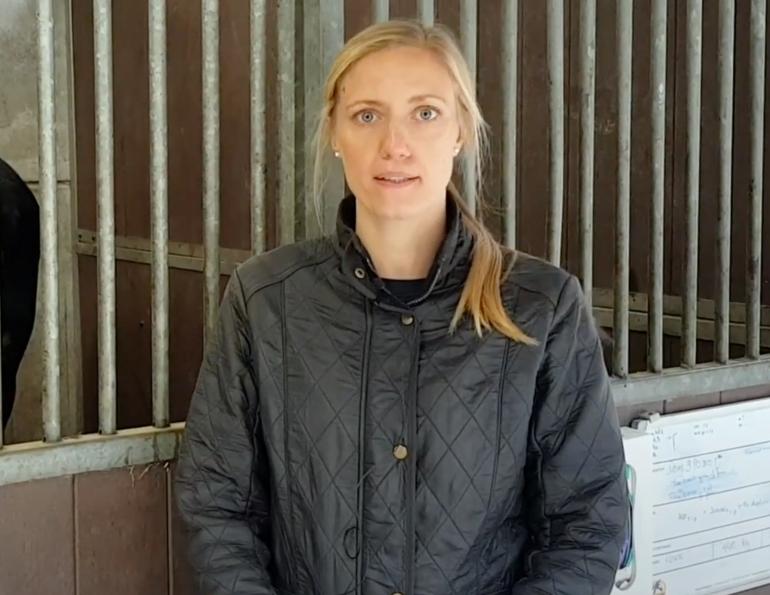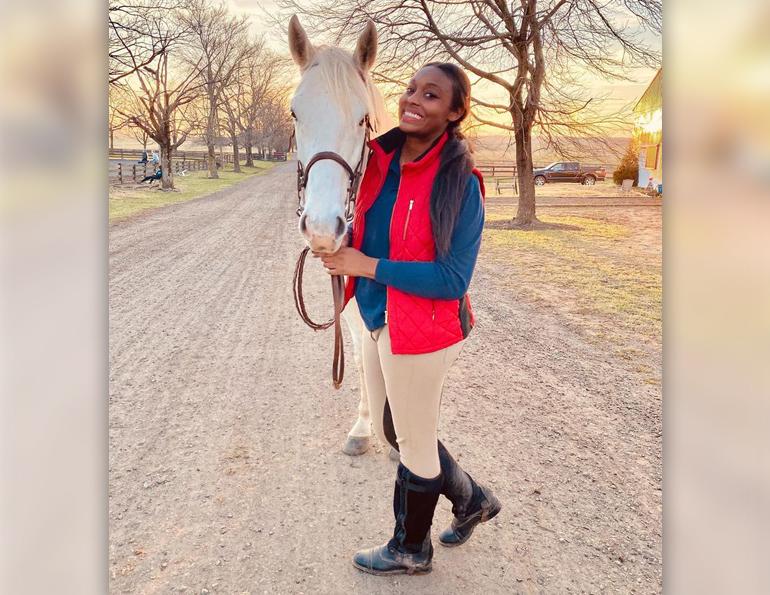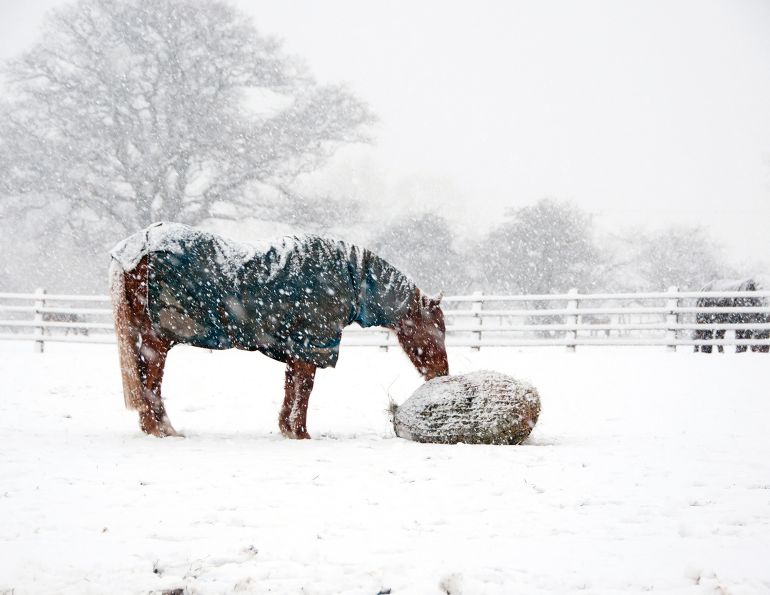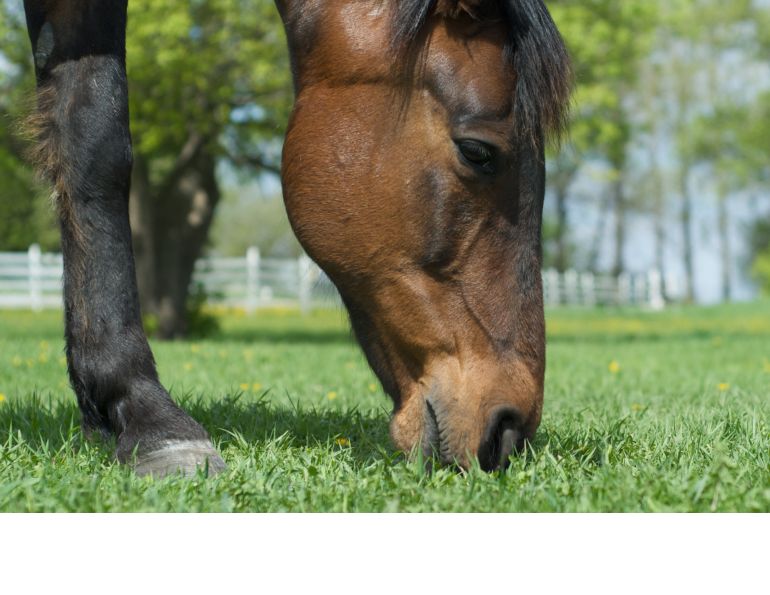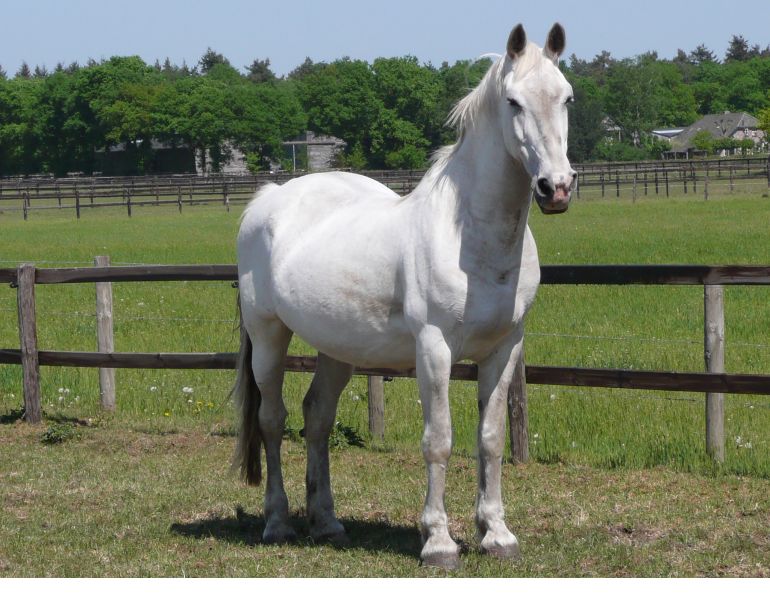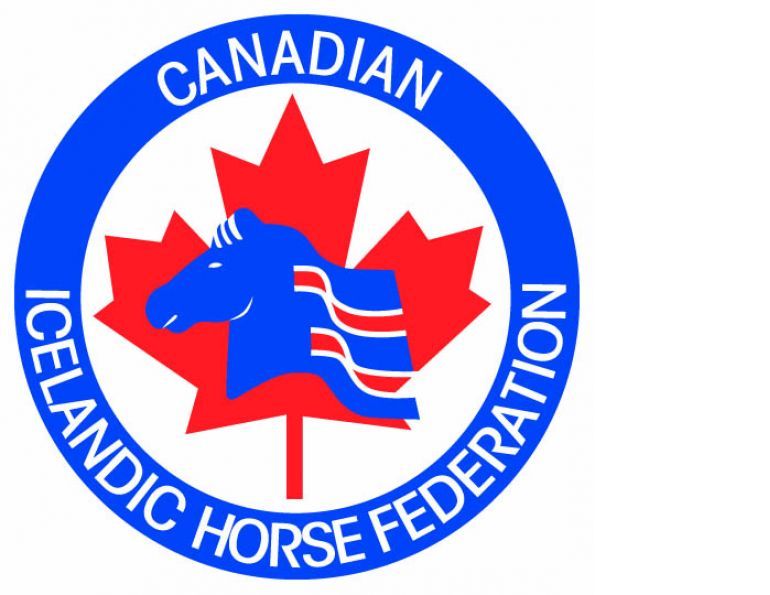By Tania Millen, BSc, MJ
Sooner or later, most horse owners have the unfortunate experience of dealing with an injured horse. It’s common sense to have a veterinarian assess what’s wrong as soon as your horse becomes injured, but a vet will also help create a rehabilitation plan, advise how long the recovery period will be, and provide post-recovery expectations. Depending on the type and severity of the injury, the future plans for the horse, and the prognosis, the experience can be an emotional roller coaster.
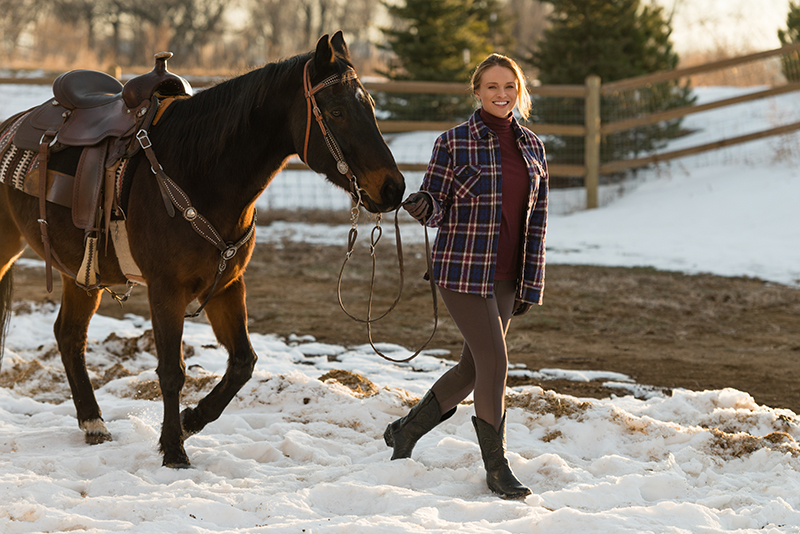
When your horse becomes sidelined with an injury, finding ways to cope with the downtime and refocussing on the goal of having a healthy horse again will not only help you survive the uncertainty, but can also you improve your relationship with your horse. Photo: Shutterstock/Mtsaride
If the recovery period or prognosis is unknown, you may be operating in limbo-land for quite some time. That unknown can be particularly stressful, so focussing on the end goal of having a healthy horse again, enjoying each day as it comes, or refocussing elsewhere are all tactics that can help. Finding a silver lining in your horse’s injury will not only make the experience more enjoyable, it may improve your relationship with your horse and even increase your horse’s quality of life.
Many professionals have struggled with the challenges of injured horses and they have great suggestions for how to survive these difficult times. Jonathan Field, a popular horsemanship clinician, says, “There are lots of little low-impact exercises that riders can teach their horses while they’re injured or on restricted exercise programs. For example, teaching them to drop their head or place their feet on an object gets them thinking and engaging with their rider, which keeps the horse stimulated, but also helps build a stronger bond between horse and rider.”
Jackie Johnson, head trick trainer at Stunthorse.com observes, “Many horses that are injured have a tremendous amount of energy that owners often have challenges dealing with. Low-impact trick training can be just as mentally challenging as physical exercises, and it can really help keep a horse’s energy in check during recuperation.”
Meanwhile, Chelan Kozak, a USEA level IV coach and CCI4* rider, has found that few injuries require complete immobilization, hence she nearly always provides a small paddock, run-out stall, or hand-walking to keep the injured horse sane. She also suggests keeping horses in stalls and paddocks where there is lots of activity, using veterinary-prescribed sedatives where suitable, and taking advantage of slow feed hay nets.

If the patient does not require complete immobilization, a run-out stall or a small paddock will help him stay sane. Photo: Thinkstock/Julia Siomuha
There are many ways to help your horse thrive during the down days of an injury, alleviate your frustration, and potentially turn the lemon of an injury into sweet and unexpected lemonade.
Here are eight activities to help you:
1 - Map the Recovery Period
Maintaining the sanity of confined horses can be challenging, and being unable to ride for an extended period can turn level-headed riders into basket cases. So, it’s really useful to mark your horse’s injury date on a calendar and then plan activities for each week of the recovery period. Celebrate your successes along the way, and whenever you feel frustrated or grumpy, check the calendar to see how far you’ve come.
Related: When Horses and Riders Hurt Themselves
2 - Teach New Skills
Competitive horses used to physical activity often struggle during downtime, so teaching new skills may help keep them sane and prevent bad habits from developing. Jackie Johnson feels that trick training is a perfect activity for injured horses, as it fosters communication between horse and handler, and builds a mutually beneficial, trusting relationship which transfers to the saddle.
Johnson states, “Most trick training works on low-impact activities or activities that involve stretching, so depending on the limitations of the horse and your vet’s permission, tricks to teach your injured horse can include: smile, hug, target training, pedestal work, yes, no, and stretching down between the front legs.”

Low-impact trick training helps mentally stimulate your injured horse, plus build your relationship. The pedestal is also great for stretching muscles. Photo: Jackie Johnson
3 - Develop Better Manners
If your horse has poor manners that you haven’t got around to working on, maybe now’s the time to teach him. Does he dislike his flanks or sheath being touched? Not great at picking up his feet? Doesn’t like you lifting his tail or brushing his legs? Doesn’t move his front, middle, or rear end when asked? These are all simple things to work on while he’s recovering from an injury, and they’ll make him more enjoyable to work with on the ground and under saddle both during his recovery period and in the future.
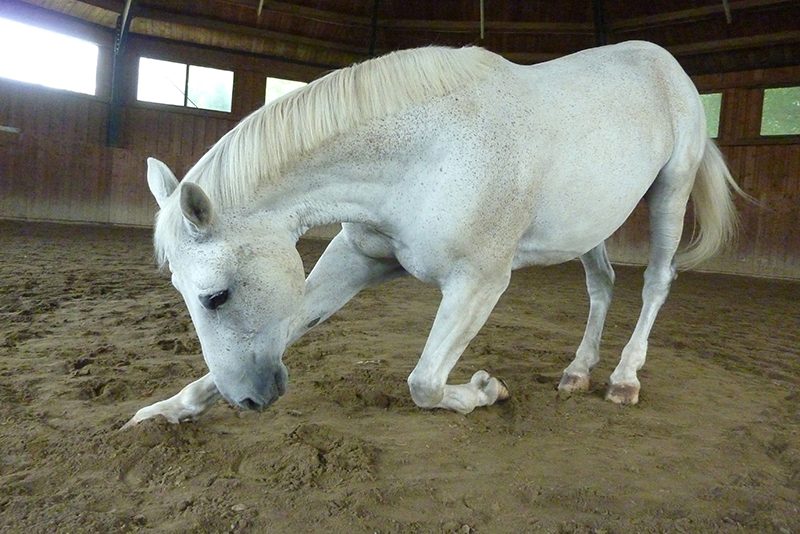
Downtime while recovering from injury can be a good opportunity to improve your horse’s manners and teach him new skills.
Related: How to Achieve a Sounder Horse
4 - Improve Health
Giving your horse a break from training or competing – even if it’s due to an injury – can be a great time to improve his health in other ways. For example, if he’s underweight, struggles with ulcers, has poor feet, mud fever or other ailments, rehabilitation requirements such as dry footing and 24/7 netted hay may be well suited to addressing these issues.
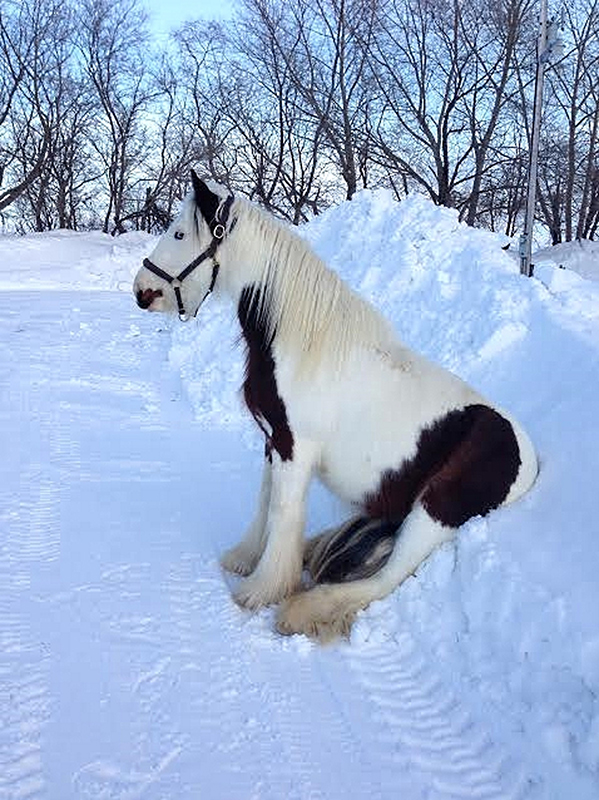
Just sitting around waiting for an injury to heal. Photo: Jackie Johnson
5 - Get Into Massage
Massage can bring significant benefits to your horse including increased circulation, decreased stiffness and muscle tightness, and greater relaxation and self-healing. For injured horses – particularly those with limited turn-out - massage can produce remarkable changes. So, learning some simple massage techniques when your horse is injured is a great way to strengthen your relationship with your horse and at the same time provide him with significant mental and physical benefits – plus, you’ll have another tool in your toolbox, post-recovery.
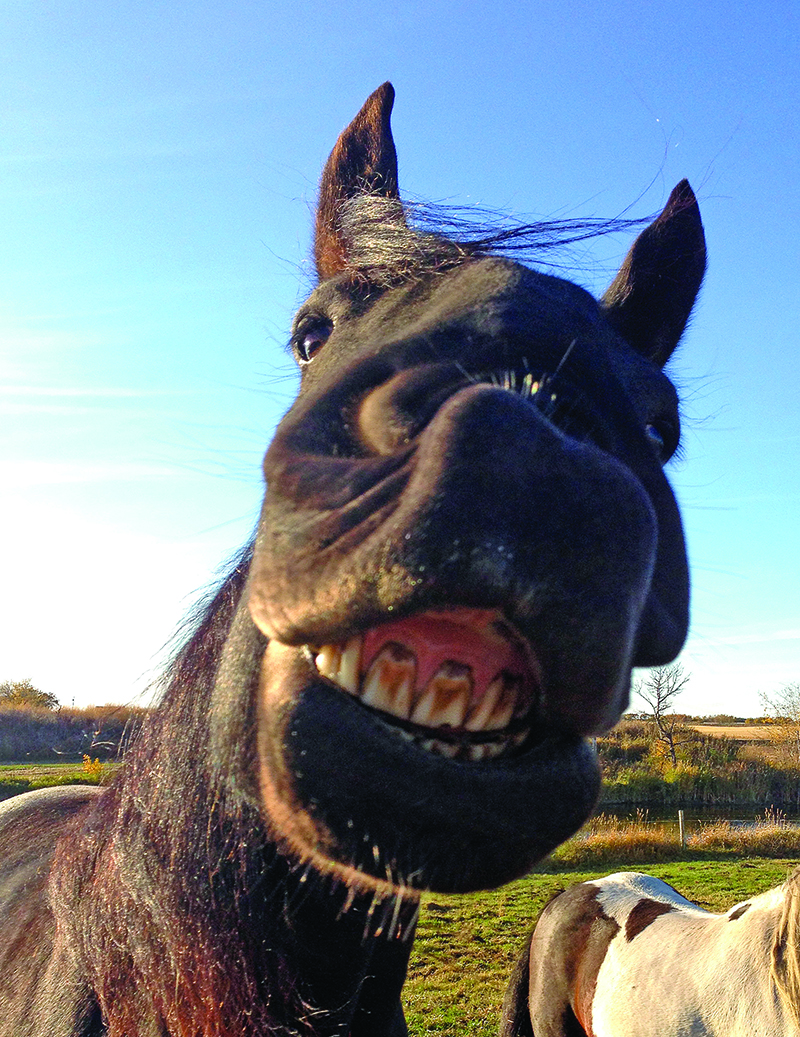
Smiling is a simple trick to teach your horse and it makes riders smile, too! Photo: Jackie Johnson
6 - Ride Another Horse
While your horse is recovering, consider training or riding another horse. Chelan Kozak suggests that it’s critical for riders to continue training and practicing their skills. Leasing, taking lessons, or offering to ride or compete a friend’s horse are all good options. Developing your riding skills means once your horse has recovered, you’ll ride that much better.
When Jonathan Field’s top horse was sidelined for a year, he chose to refocus on his up-and-coming green horse – spending the time he would have put into the injured horse on his young horse instead. Field says that shifting his focus and investing in another horse helped him overcome the disappointment of having his top horse injured. “I was fortunate to have another horse to concentrate on, and the time I’ve put into my young horse is really paying off.”
7 - Take a Break
Sometimes the heartache of an injured horse – particularly if the prognosis is poor – can be difficult to bear. There are many good rehabilitation facilities that do an excellent job of rehabilitating horses and often have therapeutic tools that are unavailable at general boarding facilities or private stables. Choosing to send your horse to a rehabilitation facility for specialized care may be the right option.
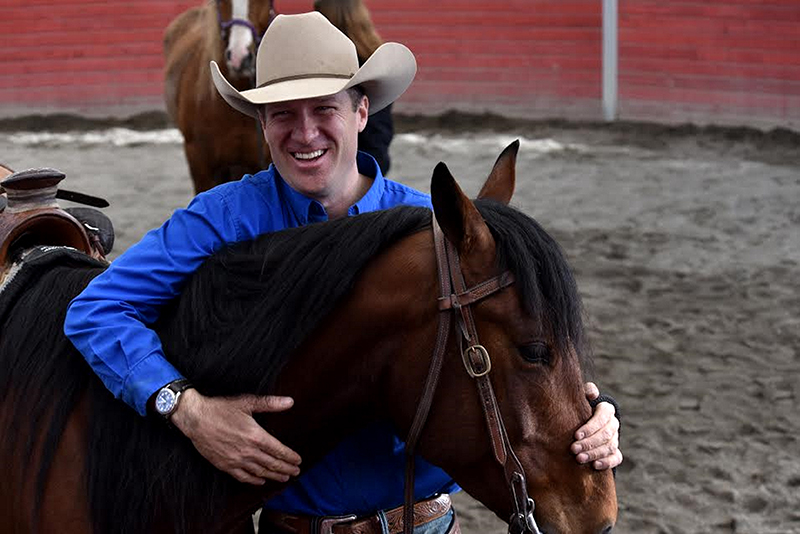
Using downtime productively can keep injured horses and riders in good spirits. Photo: Angie Field
8 - Learn Something New
Sometimes having an injured horse means you have time to do other things. One friend whose horse was injured spent her former riding time taking a college course. When her horse was ready to ride four months later, she’d finished the course, her horse had recovered from his injury, and she was keen to start riding again. It was a perfect mental break for her, plus she felt the time had been well spent as she’d gained knowledge for her burgeoning career.
All these activities are excellent ways to survive your horse’s injury. But sometimes great benefits arise from unfortunate events, too.
After the most expensive horse I’ve ever bought was injured, I made the difficult decision to sell him once he’d recovered. Having made that decision, it was challenging to remain motivated during his rehabilitation. However, unbeknownst to me, a woman at the same boarding facility had been admiring him for quite some time. As soon as he recovered, she immediately approached me about doing a straight swap of her simple packer for my fancy young gun. I jumped on the deal and we both walked away happy, having gained much from a difficult situation.
When Jonathan Field was asked to help a jumper client with her stall-bound injured Selle Français warmblood, he concentrated on teaching the horse to think. “This lovely gelding was going crazy being stall-bound, and the groom and rider simply couldn’t hand-walk him as the vet had specified. So, I taught him how to mentally connect with his feet. First, I taught him how to put his head down, then how to place his feet one at a time on the ledge of his stall opening, then how to walk on a loose lead rope. All really simple exercises, but they kept him mentally engaged and ultimately, those simple exercises allowed the horse to be rehabilitated safely.”
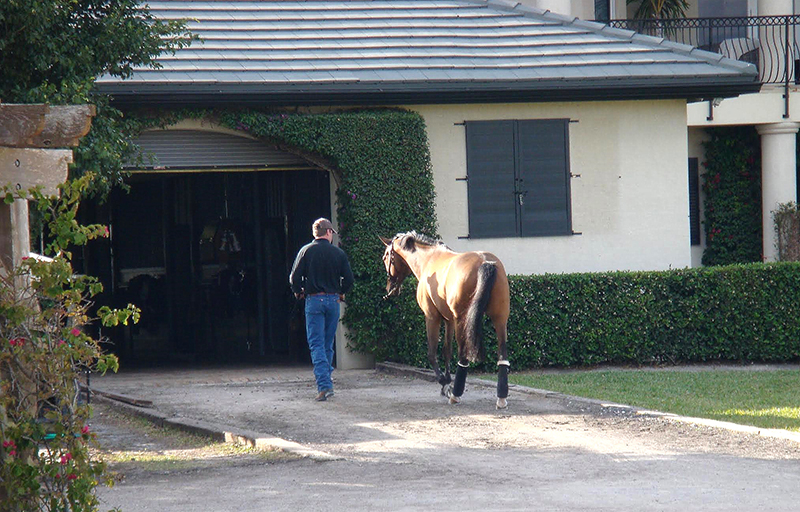
After teaching this injured warmblood to think, Jonathan Field and his client could safely hand-walk him, as the vet had prescribed. Photo: Angie Field
But the story doesn’t end there. Field recounts, “The challenges of that horse’s recovery really altered the rider’s view of her relationship with her horse. She remembered how much she enjoyed riding on a ranch when she was young, and what grabbed her about riding in the first place. It reminded her that riding is about partnership and that success comes from true horsemanship.”
Having an injured horse is often expensive, frustrating, and puts a big glitch in your riding season. However, if you can find ways to use the rehabilitation and recovery period to your advantage, the time will go by faster, and you’ll end up with a happier, better trained and healthier horse. Isn’t that sweet?
Related: Training Our Minds to Cope with Unexpected Challenges
Photo: Dreamstime/Wavebreakmedia Ltd




